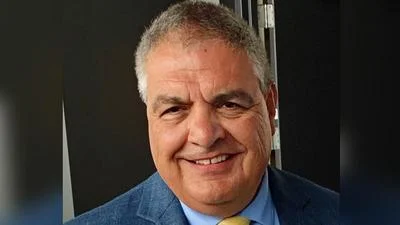Mid-Ohio Regional Planning Commission | Free CCO Credit
Mid-Ohio Regional Planning Commission | Free CCO Credit
The Central Ohio region has seen a dramatic increase in fatal and serious injury crashes since the start of the pandemic
Against the backdrop of increased injury crashes in the region, Ohio has enacted legislation that will crack down on distracted driving, including making electronic device use while driving a primary offense in most cases.
The new law:
° Broadens the existing texting-while-driving prohibition to prohibit a person from using, holding, or physically supporting an electronic wireless communications device (EWCD) while operating a motor vehicle, trackless trolley, or streetcar.
° Makes the EWCD-while-driving prohibition a primary offense, rather than a secondary offense for adults, as in current law.
° Modifies current exemptions and creates additional exemptions to the new EWCD while-driving prohibition by generally allowing only limited and mostly hands-free use of an EWCD while driving.
° Establishes reporting requirements for law enforcement officers, law enforcement agencies, and the Attorney General related to the race of offenders issued a ticket, citation, or summons for a violation of the EWCD-while-driving law or the distracted driving law.
The 11-county region in Central Ohio has seen an increase in recent years with 228 fatalities and 1,484 serious injuries reported in 2020. Prior to 2020, serious injuries had been decreasing nearly every year. And while driving was markedly down in 2020 due to the pandemic, a report for that year found a surprising and alarming statistic: traffic deaths had risen.
The National Safety Council (NSC) said deaths from motor vehicles rose 8 percent that year, with as many as 42,060 people dying in vehicle crashes. When comparing traffic deaths to the number of miles driven, the rate of fatalities rose 24 percent — the highest spike in nearly a century.
“This is devastating for too many families here and across Ohio. Safety on our streets must come first when we are planning and building transportation systems of the future for Ohio. The passage of Senate Bill 288 is a step closer to safer corridors for everyone. MORPC Chief Regional Development Officer & Senior Director of Programming Thea Ewing There is also an economic cost: MORPC estimates the societal cost of these serious crashes is $3.94 billion.
MORPC has a history of working closely with local communities to ensure residents are safe while traveling. Program staff actively analyzes crash data to better understand why crashes occur and how certain populations, behaviors, and locations are more susceptible to a deadly traffic crash.
Another central public policy goal for MORPC and its local governments is to raise awareness of racial and social justice issues and continually improve communities in our growing region. While focused on improving the safety of our roadways, MORPC leaders say it is critical to also be mindful of potential unintended consequences, such as the use of additional public safety laws to target communities of color. Every proposal on safety should consider how to improve this situation.
“We thank Governor DeWine and members the General Assembly for passing this legislation that makes our roadways safer and protects residents. While the distracted driving provisions passed in Senate Bill 288 are not perfect, it is a big step in the right direction. As officers begin enforcing the new law, we will continue to advocate for traffic safety laws that discourage distracted driving in all forms and that are administered free from bias.”
MORPC’s Senior Director of Government Affairs & Community Relations Joseph Garrity
Senate Bill 288 was signed today by Governor DeWine. The bill specifies that for the first six months, law enforcement may only issue a written warning to a driver for violating the EWCD-while driving prohibition. The officer may stop a driver for the violation, as amended by the bill, but may not necessarily issue a ticket, citation, or summons for the violation.
Original source can be found here.






 Alerts Sign-up
Alerts Sign-up